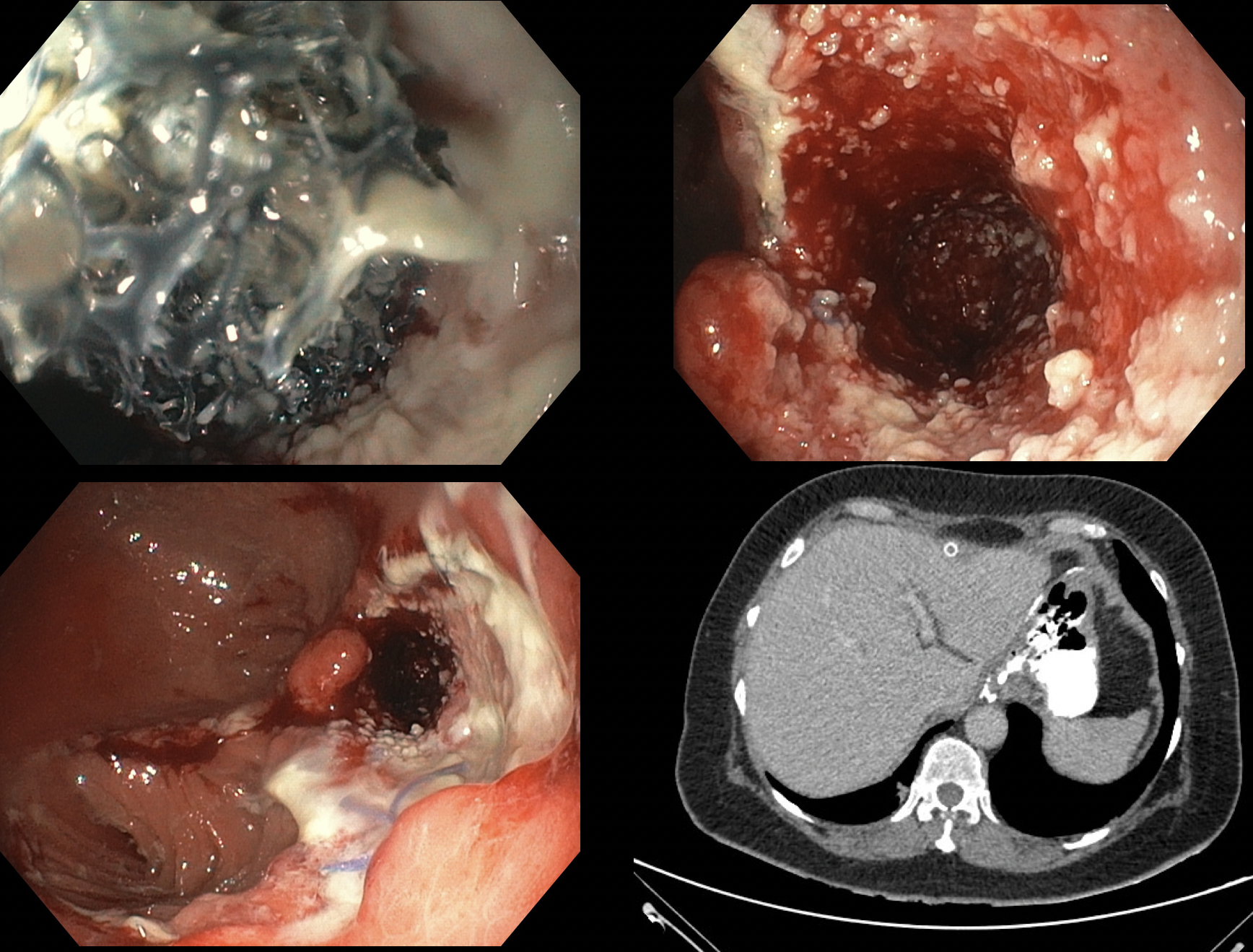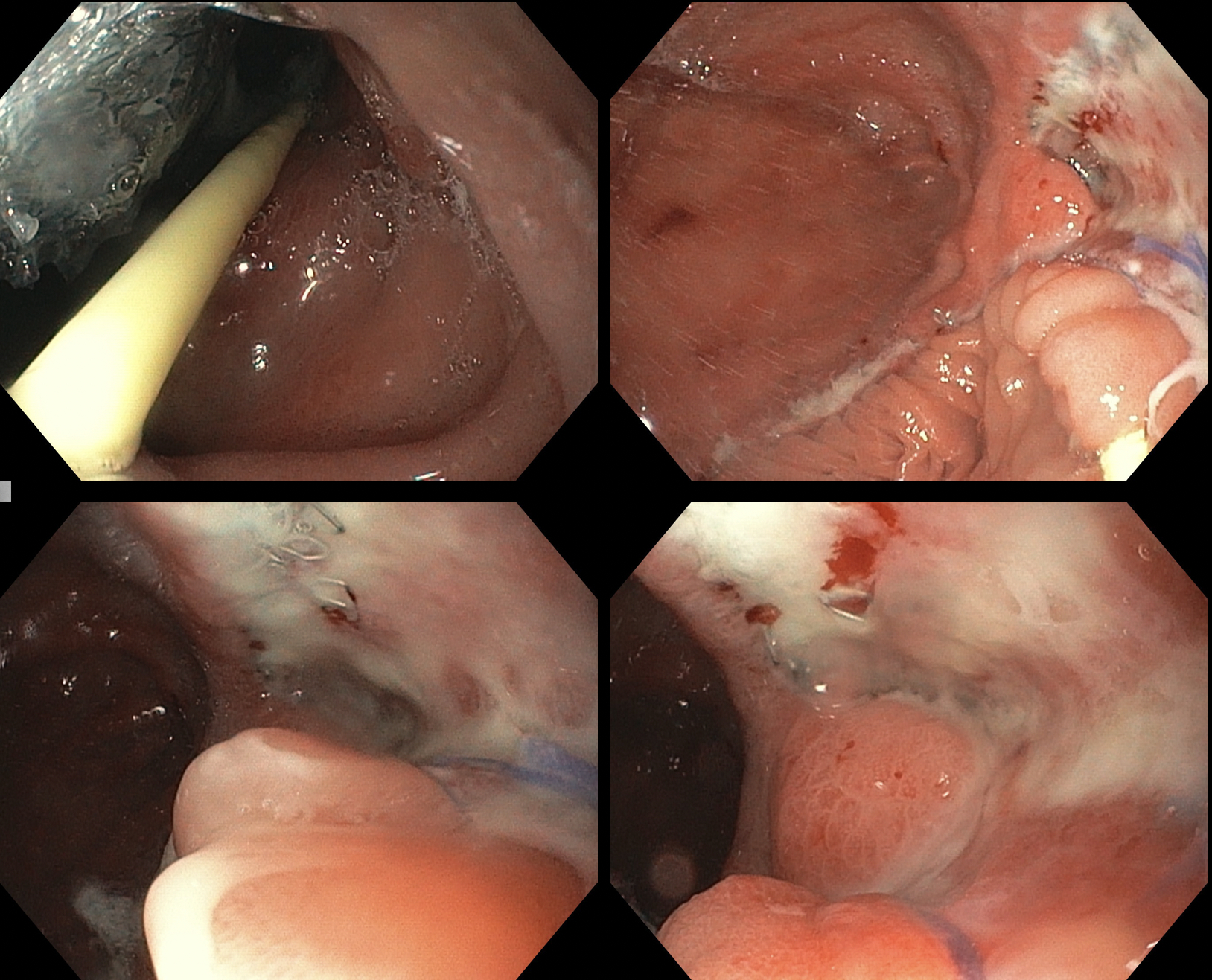Background: Anastomotic leakage following upper gastrointestinal (GI) surgery is associated with morbidity and mortality rates of up to 30% and 4%, respectively, in various series. The prevention, early identification, and appropriate treatment of these leaks are crucial to minimizing risks and improving surgical outcomes. Endoscopic Vacuum Therapy (EVT) is a viable treatment option for closing upper gastrointestinal leaks and other defects. Our objective is to describe our experience using EVT in patients with upper gastrointestinal leaks for defect closure.
Methods: A prospective cohort study was conducted on all consecutive patients at UC-Christus Clinical Hospital undergoing upper gastrointestinal surgery with subsequent leaks treated using EVT. We analyzed demographic and clinical patient characteristics, surgical outcomes, success rates (endoscopic or contrast imaging proving leak closure), and mortality. Treatment failure was defined as when anastomotic filtration did not improve despite EVT treatment and/or when additional treatment was necessary.
In addition to descriptive analysis, univariate comparative analysis for patient characteristics and treatment data was performed using Fisher’s exact test for categorical variables and the Mann–Whitney U test for numeric variables. The significance level was set to ? = 5%. All analyses were conducted using R Data analysis software.
Results: A total of 18 patients between April 2021 and November 2023, with upper digestive tract leakage managed with EVT, were included. 8 women and 11 men with a mean age of 58 (20-85) were involved. Regarding baseline diagnoses, 14 patients with malignant pathology and 4 with benign pathology were included. The mean number of days of EVT use was 16 (6-36 days), with a mean number of changes of 2.8 (1-8 changes). The success rate was 83.3%. Mortality was recorded in 3 patients due to ongoing sepsis (2 patients) and a mycotic aortic aneurysm.
Conclusion: EVT for the management of postoperative upper GI surgery leaks appears to be safe and effective in our series. It demonstrates successful closure of the defect; if not, it serves as a bridging treatment, stabilizing the septic condition. We are actively working on future studies with greater statistical strength to provide comprehensive recommendations.

